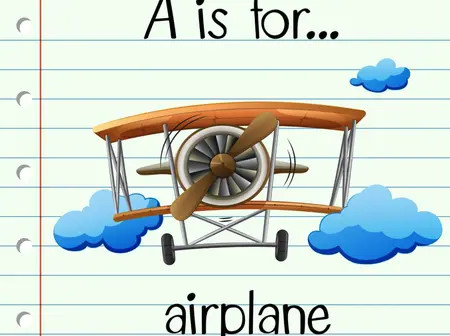So, you bought an aircraft? Cute. But unless you also have an Air Operator Certificate (AOC), all you have is a very expensive toy. Getting an AOC from the Kenya Civil Aviation Authority (KCAA) is like applying for a visa to Mars—it can take months, sometimes years, and involves jumping through enough safety and regulatory hoops to make your head spin. For comparison? Getting a PSV license is as easy as clicking “Apply” and printing your confirmation.
Running a matatu? You need a driver, maybe a conductor, and a good horn. Flying a plane? You need an army. One flight can involve up to 100 people—check-in agents, security personnel, baggage handlers, ground crew, cockpit crew, cabin crew, and the guy who unplugs the charging cable (just kidding… kind of). In aviation, it truly takes a team to tango.
A single Boeing 787 carrying 234 passengers needs at least 100 staff just to turn around between flights. That’s roughly 1 employee for every 3 passengers. In contrast, one Kenyan bank employee handles 1,733 customers (according to CBK 2020 stats). So yes, airlines are glamorous—but they’re also financial black holes with wings. Staff costs are sky-high (pun fully intended).
Seen tape on a plane wing and immediately considered writing your will? Relax. It’s not the same duct tape holding your side mirror together. It’s aerospace-grade speed tape, designed to withstand high-speed airflow, freezing temperatures, and your mother-in-law’s screaming. It’s used for temporary cosmetic fixes, not structural damage. If it were serious? That plane wouldn’t be flying.
Matatus can rock neon graffiti, gospel slogans, and entire murals of Cristiano Ronaldo. Planes? Not so much. Most aircraft are painted white, and not just because it looks sleek—it actually helps reflect sunlight, keeps the cabin cooler, and reduces heat stress on the metal. Plus, painting a plane isn’t a DIY Sunday project—it’s done in highly specialized hangars, and costs about the same as a small wedding. In Karen.
Airlines might look glamorous with their shiny planes and crisp uniforms, but their profit margins are enough to make your accountant cry. According to IATA’s 2025 projections, here’s how the net profit margins stack up by region:
And here’s the kicker: African airlines make a grand total of $1 profit per passenger. That’s right—one dollar. Enough to buy… a chewing gum. Maybe.
Let’s be honest—most airlines exist more for national pride and for other strategic reasons than actual profit. So, if you are dreaming of fat returns, skip the runway and hop on the Mbukinya Bus. Fewer delays, fewer headaches, and way more room for profit.
Small numbers are great—if you’re talking about your waistline. But in aviation? Bigger is definitely better.
When it comes to airlines, size isn’t just bragging rights—it’s serious business. The larger your fleet, the more you can save thanks to economies of scale. The fastest way to grow that fleet? Buy more planes—assuming your wallet can handle it.
The next best option? Make some friends. Airline partnerships are like group projects that actually work. Take KLM-Air France or the Pan-African Airline Group led by Kenya Airways. By teaming up, airlines can cut down on training and maintenance costs by sharing resources. Even spare parts get cheaper when you’re ordering them by the truckload.
So, in aviation, go big or go… budget
Airlines are notoriously sensitive to demand shocks — those sudden “what just happened?” moments that cause travel demand to nosedive or spike without warning. These shocks can come from just about anywhere: economic slumps, seasonal swings, new government rules, tech shakeups, or global chaos like natural disasters, wars, or—you guessed it—a pandemic. When COVID-19 hit, global passenger travel hit the brakes so hard it practically left skid marks on the runway. Planes stopped flying, but banks? Oh, they never stopped counting.
If you’re flying, expect a few hiccups—because let’s face it, operational hitches are practically part of the in-flight entertainment. Whether it’s fog rolling in like it owns the runway, sudden storms, or a surprise VVIP deciding today’s the perfect day for a grand entrance (and clearing the skies for themselves), something will go wrong.
Throw in the occasional strike just to keep things interesting, and even the most carefully crafted travel plans can unravel faster than an airline’s complimentary headphones.
Yet, no matter what—or who—is actually responsible, you can bet your baggage the airline will still get the blame. Bad weather? Blame the airline. Traffic in the sky? Still the airline. Mars is in retrograde? Definitely the airline.
If the airline’s financials take a dip, it’s management’s fault. If currency swings cause losses, the public shrugs: “Should’ve seen it coming.” If those same swings result in gains? Suddenly, it’s just “temporary market noise.” When a turnaround strategy finally works, it’s chalked up to dumb luck or some magical, unrepeatable glitch in the matrix.
Basically, applause is rare, and appreciation is even rarer. But hey, there’s satisfaction in getting people and packages safely where they need to be—and helping the economy take off in the process.
Oh, and let’s not forget the salary. That definitely helps cushion the turbulence.

Leave a Reply